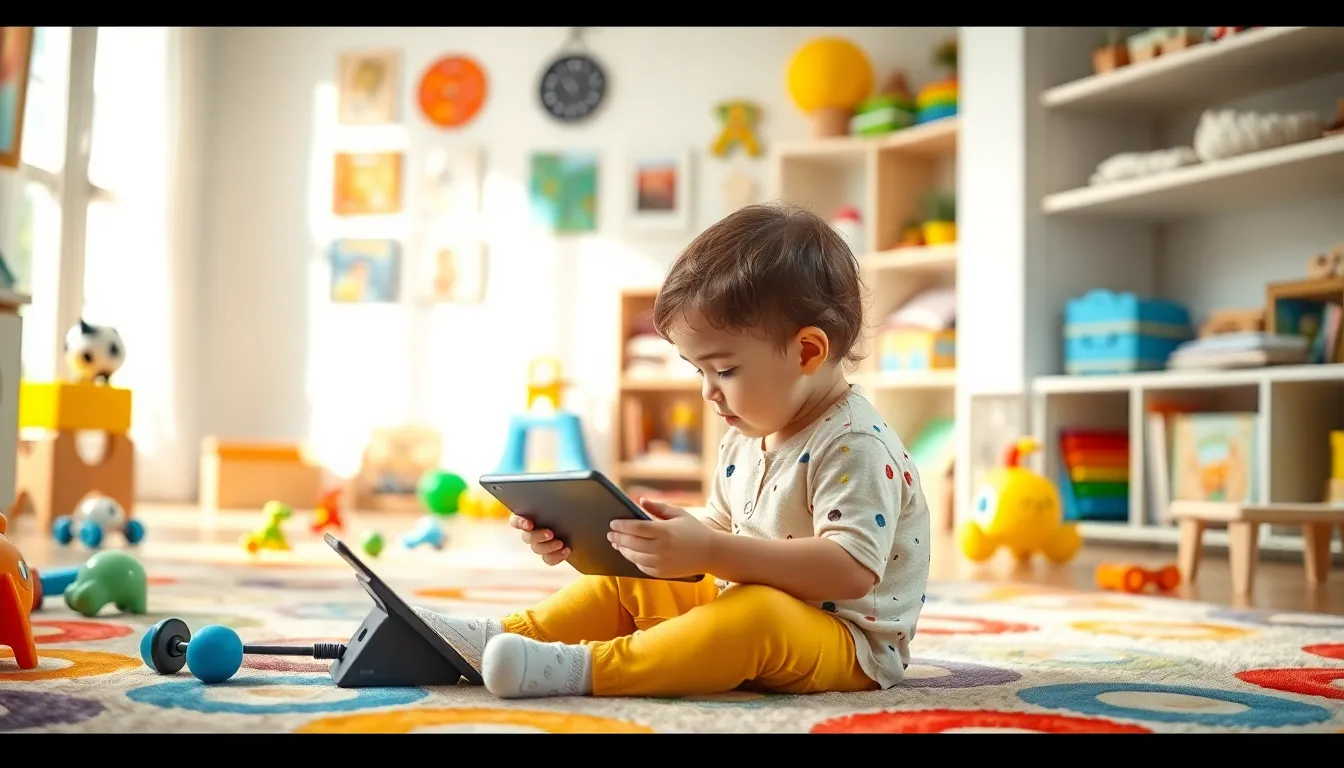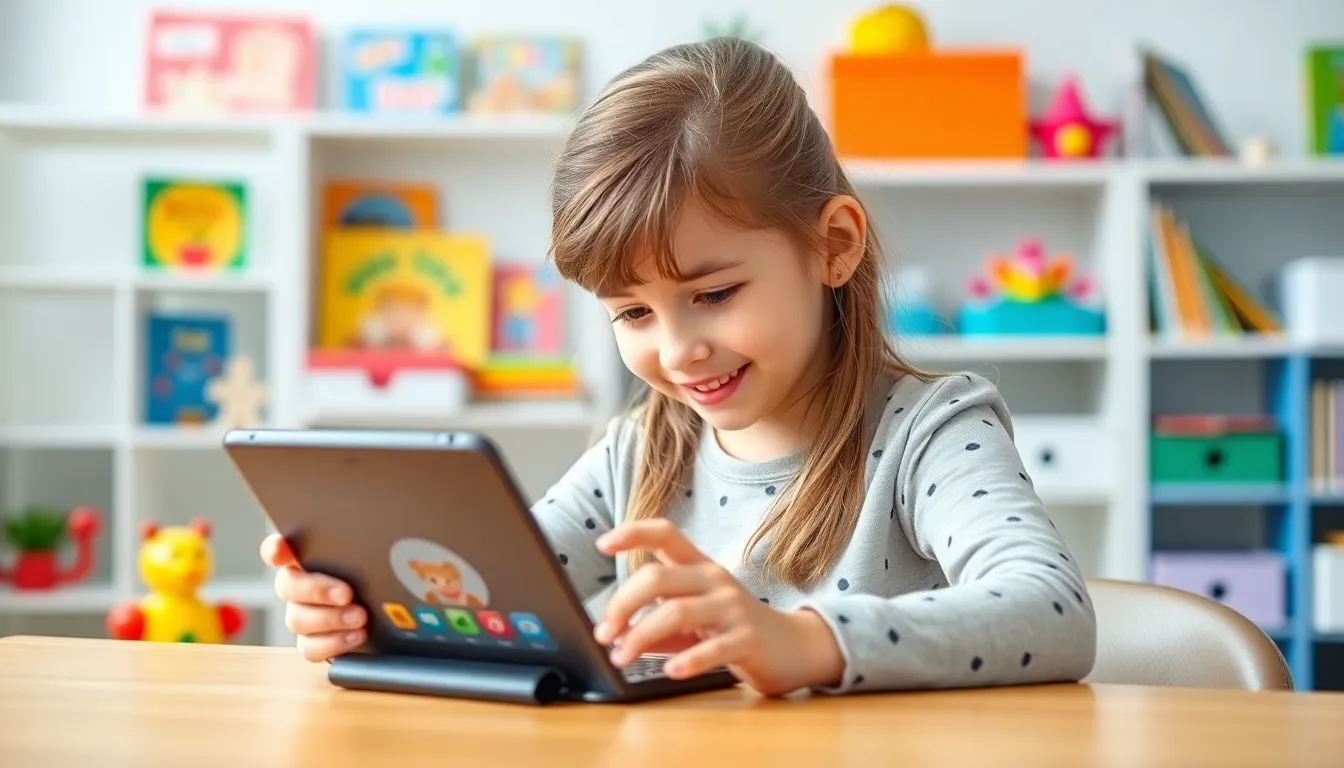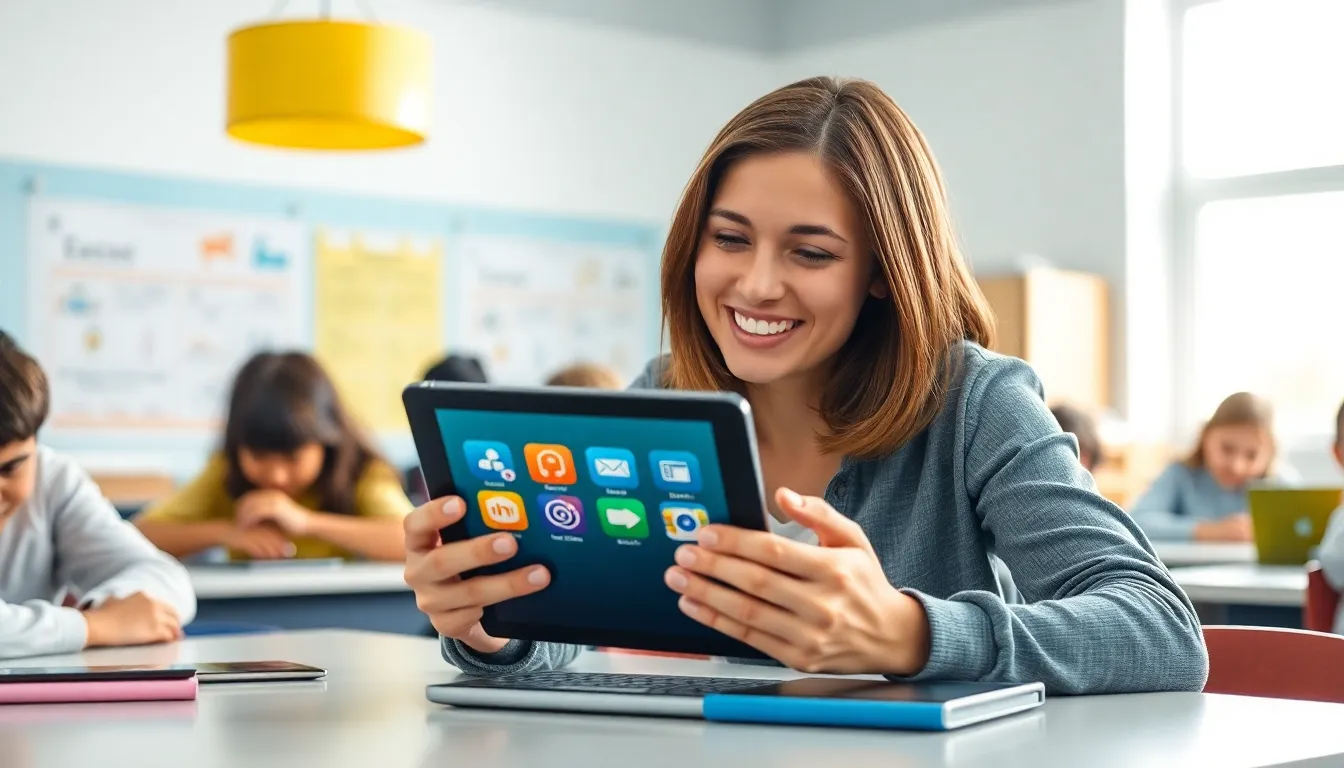In today’s digital age, kids and screens go together like peanut butter and jelly. But while parents often worry about excessive screen time, educational apps are shaking things up. They’re not just a way to keep kids entertained; they’re also powerful tools for learning. Who knew that math could be as fun as a game of candy crush?
As children navigate a world filled with distractions, the right educational apps can transform screen time into brain-boosting time. With engaging content designed to spark curiosity, these apps can make learning feel like a treasure hunt instead of a chore. So, before tossing those tablets out the window, let’s explore how educational apps can strike the perfect balance between fun and learning, helping kids thrive in a tech-savvy world.
Table of Contents
ToggleUnderstanding Educational Apps
Educational apps play a significant role in shaping children’s learning experiences. They provide interactive platforms that engage young users while fostering essential skills.
Types of Educational Apps
Various educational app types cater to diverse learning needs. Language learning apps help improve vocabulary and grammar. Math apps enhance problem-solving and critical thinking skills. Science apps promote exploration through experiments and interactive simulations. Additionally, art apps encourage creativity and self-expression. Each app type targets specific subjects, making learning more effective for children.
Benefits of Educational Apps
Numerous benefits arise from utilizing educational apps. First, they enhance engagement through gamified learning experiences. Children often become more motivated when learning feels like play. Second, these apps allow for personalized learning, adapting to individual pacing and skill levels. Third, parents appreciate tracking features that monitor progress. Educational apps also encourage independent learning, empowering children to explore topics at their convenience. Integrating these tools into daily routines can transform screen time into valuable learning opportunities.
The Impact of Screen Time on Learning

Screen time plays a crucial role in children’s education. It can offer both benefits and drawbacks, depending on usage.
Positive Effects of Screen Time
Educational apps enhance learning by providing interactive experiences. They engage children in subjects such as math and science, making complex concepts easier to understand. Children often enjoy gamified content that motivates them to learn. Personalized learning paths allow users to progress at their own pace, promoting self-directed study. Moreover, parents can monitor usage and academic progress through built-in tracking features. Engaged learners exhibit increased retention of information when using appealing digital tools.
Negative Effects of Screen Time
Excessive screen time can lead to negative consequences. Studies show that prolonged exposure affects attention spans and focus. Children might experience difficulties in social interactions when spending more time on screens rather than engaging in face-to-face communication. Physical health can decline due to a sedentary lifestyle associated with excessive app use. Eye strain is common among users who spend extended periods focusing on screens. Balancing digital learning with offline activities helps mitigate these adverse effects on overall well-being.
Guidelines for Healthy Screen Time Usage
Establishing guidelines for healthy screen time usage ensures children reap the benefits of educational apps while minimizing potential risks. Implementing effective strategies fosters a balanced digital learning environment.
Recommended Screen Time Limits
Experts recommend specific screen time limits based on children’s age groups. For children aged 2 to 5, one hour of high-quality programming each day is suggested. Kids aged 6 and older should have consistent limits that prioritize balanced use of screen time and offline activities. These time frames provide structure and encourage healthy habits. Adjusting screen time according to individual needs makes a difference in maintaining focus and well-being.
Strategies for Balanced App Usage
Incorporating strategies for balanced app usage enhances children’s learning experiences. Setting specific times for educational app use creates a routine that children can follow. Encouraging breaks between app sessions helps alleviate fatigue and maintains engagement. Parents can involve children in selecting apps that interest them, fostering ownership of their learning. Combining screen time with engaging offline activities supports a well-rounded development. Lastly, regular discussions about app content promotes critical thinking and applies learned concepts beyond the screen.
Choosing the Right Educational Apps
Selecting educational apps requires careful consideration to maximize their benefits. Focus on age-appropriate content that matches a child’s developmental stage to ensure engagement. Check for key features, such as interactivity and gamification, as these elements can enhance the learning experience. Opt for apps that offer progress tracking tools, enabling parents to monitor growth. Research user reviews and expert recommendations to identify trusted applications. Assess whether the app encourages critical thinking and creativity, as these skills are essential for lifelong learning.
Criteria for App Selection
When selecting educational apps, prioritize usability and educational value. Ensure the app is user-friendly, with intuitive navigation that supports young learners. Check for a clear learning objective aligned with educational standards, which reinforces meaningful content. Analyze the level of engagement; interactive features often lead to better retention of information. Look for personalization options that adapt to a child’s unique learning style, enhancing the overall experience. Finally, consider the app’s offline capabilities, allowing for continued learning without a constant internet connection.
Popular Educational Apps
Several educational apps consistently rank among the most popular for enhancing learning. ABCmouse serves preschool through 8-year-old children, focusing on reading, math, and art with a comprehensive curriculum. Khan Academy Kids provides engaging lessons for young learners, emphasizing personalized learning paths tailored to individual needs. Prodigy Math makes math enjoyable through interactive gameplay that aligns with common core standards. Duolingo stands out in language learning, turning vocabulary practice into engaging activities. Toca Boca creates imaginative play experiences focusing on creativity and problem-solving skills. Each of these apps provides a unique approach to making learning enjoyable and effective.
Balancing screen time with educational apps can transform how children engage with learning. By selecting high-quality apps that promote interaction and creativity, parents can create a positive digital environment. This approach not only enhances academic skills but also nurtures curiosity and critical thinking.
It’s vital to monitor usage and set appropriate limits to ensure children benefit from these tools without experiencing negative consequences. Encouraging a mix of digital and offline activities helps maintain overall well-being. With thoughtful guidance and the right resources, screen time can become a valuable ally in a child’s educational journey.








